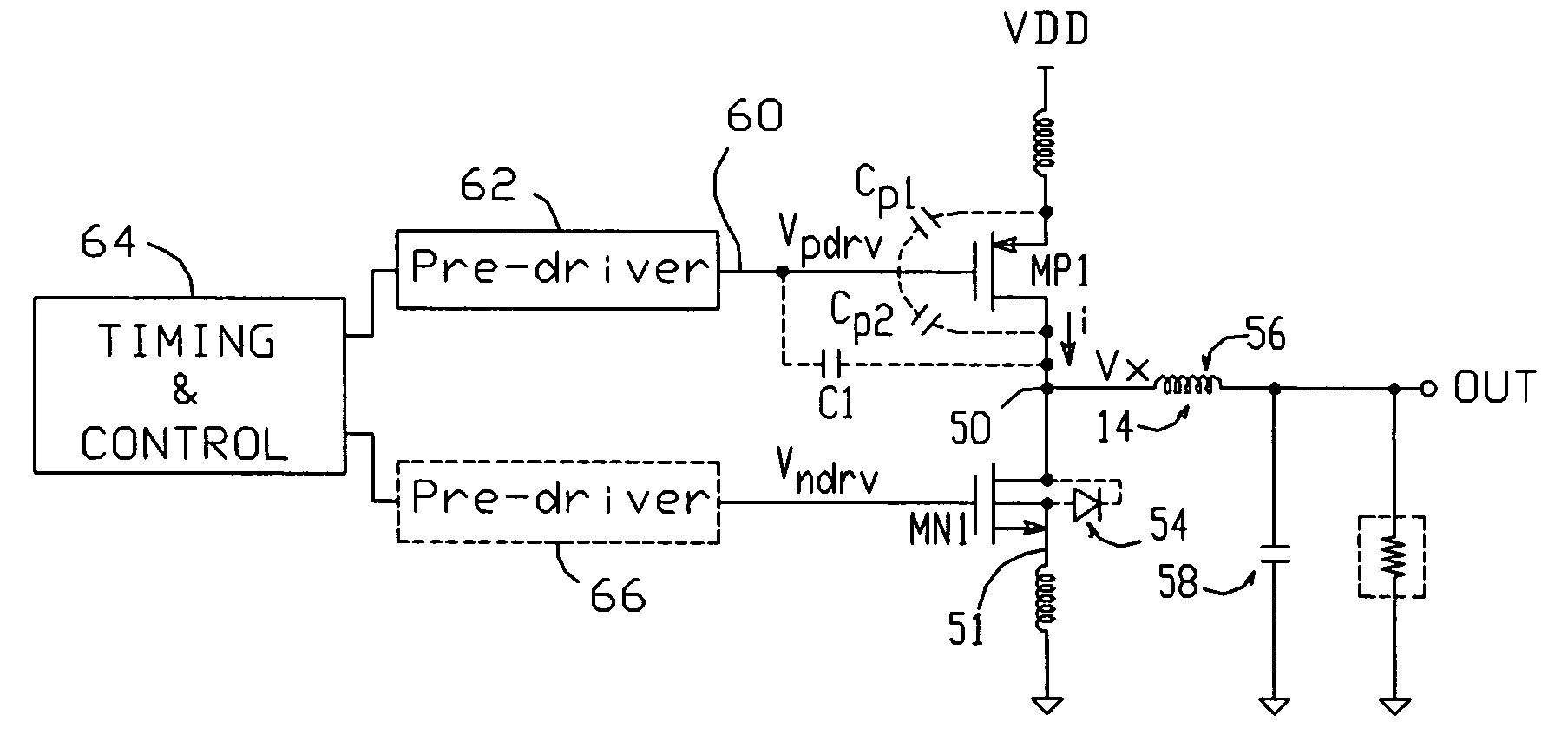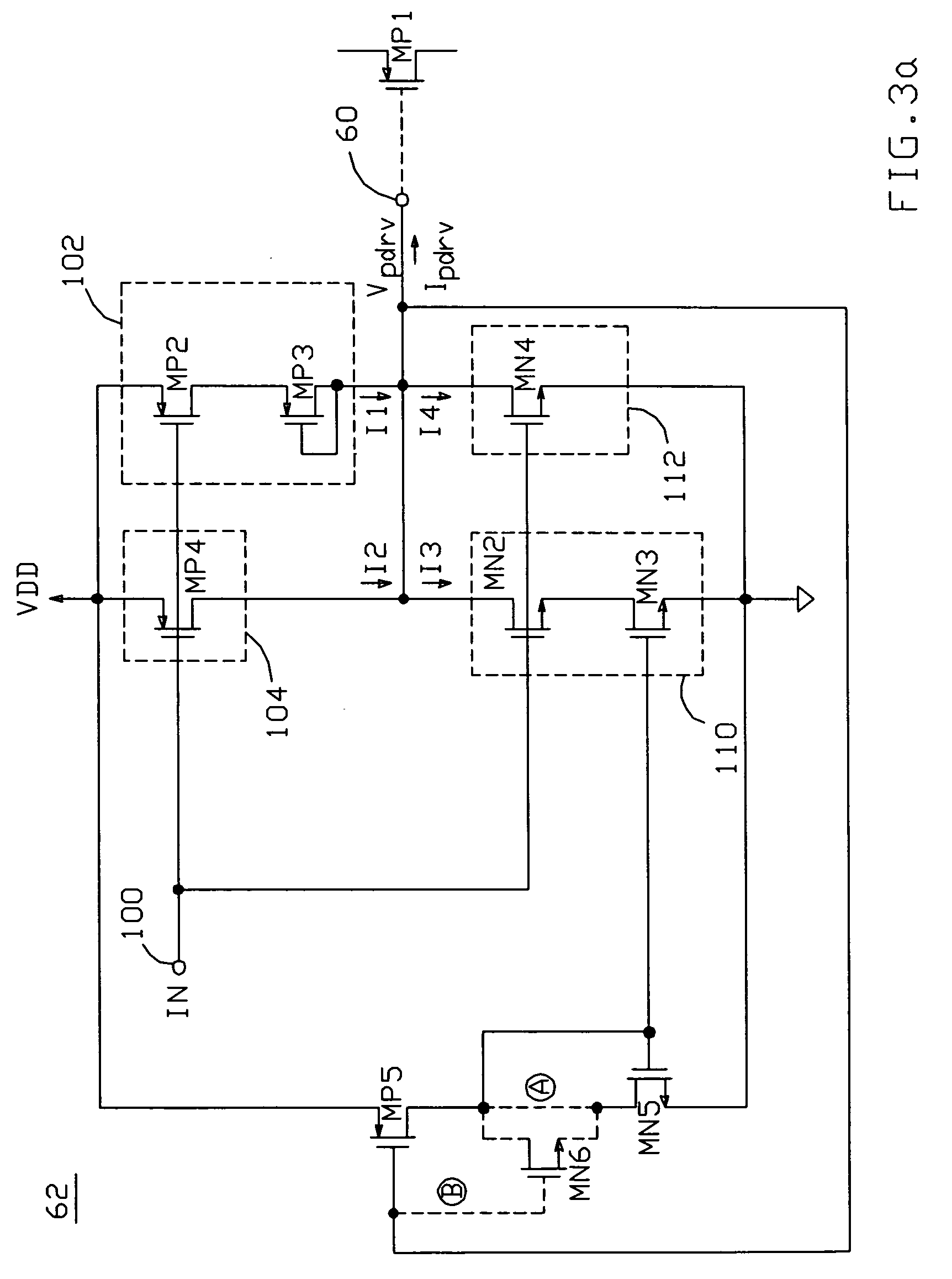Self-timed switching regulator pre-driver
- Summary
- Abstract
- Description
- Claims
- Application Information
AI Technical Summary
Benefits of technology
Problems solved by technology
Method used
Image
Examples
Embodiment Construction
[0023] A diagram depicting a switching regulator in accordance with the present invention is shown in FIG. 2a. The regulator includes a switching transistor MP1, here a PMOS FET (though the invention is equally useful with both n and p-type FETs and BJTs), connected between a supply voltage VDD and a node 50; MP1 conducts a current i to node 50. The regulator also includes circuitry 52 which provides a conductive path between node 50 and a circuit common point 51 (typically connected to ground via a bond wire); in the exemplary embodiment shown in FIG. 2a, circuitry 52 comprises a second switching transistor MN1 (with its intrinsic body diode 54). For the exemplary synchronous buck-type regulator shown in FIG. 2a, an output inductor 56 would typically be connected between node 50 and the regulator's output terminal OUT, and a filter capacitor 58 would typically be connected between OUT and ground.
[0024] Switching transistor MP1 is cycled on and off in response to a control signal 6...
PUM
 Login to View More
Login to View More Abstract
Description
Claims
Application Information
 Login to View More
Login to View More - R&D
- Intellectual Property
- Life Sciences
- Materials
- Tech Scout
- Unparalleled Data Quality
- Higher Quality Content
- 60% Fewer Hallucinations
Browse by: Latest US Patents, China's latest patents, Technical Efficacy Thesaurus, Application Domain, Technology Topic, Popular Technical Reports.
© 2025 PatSnap. All rights reserved.Legal|Privacy policy|Modern Slavery Act Transparency Statement|Sitemap|About US| Contact US: help@patsnap.com



